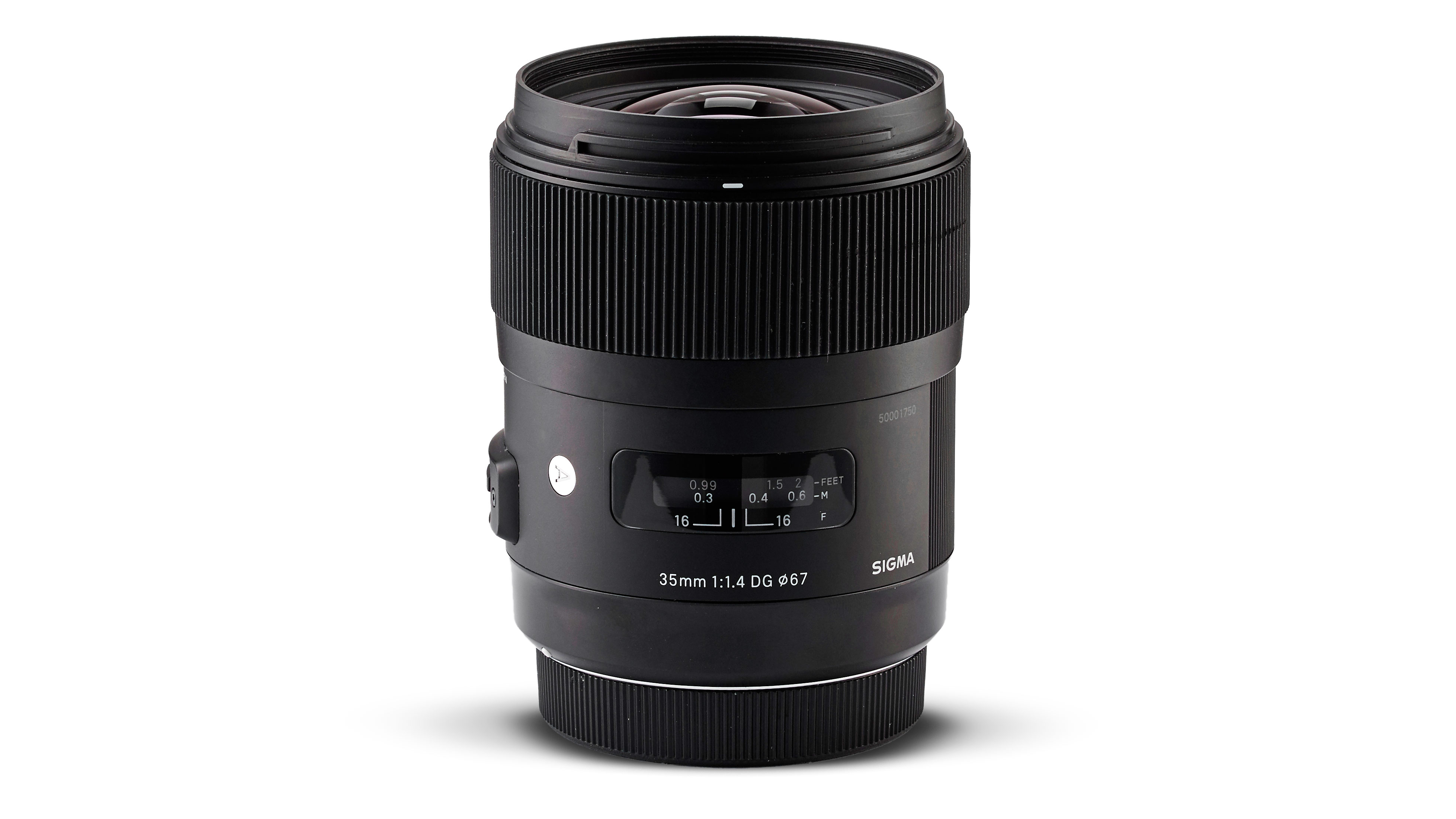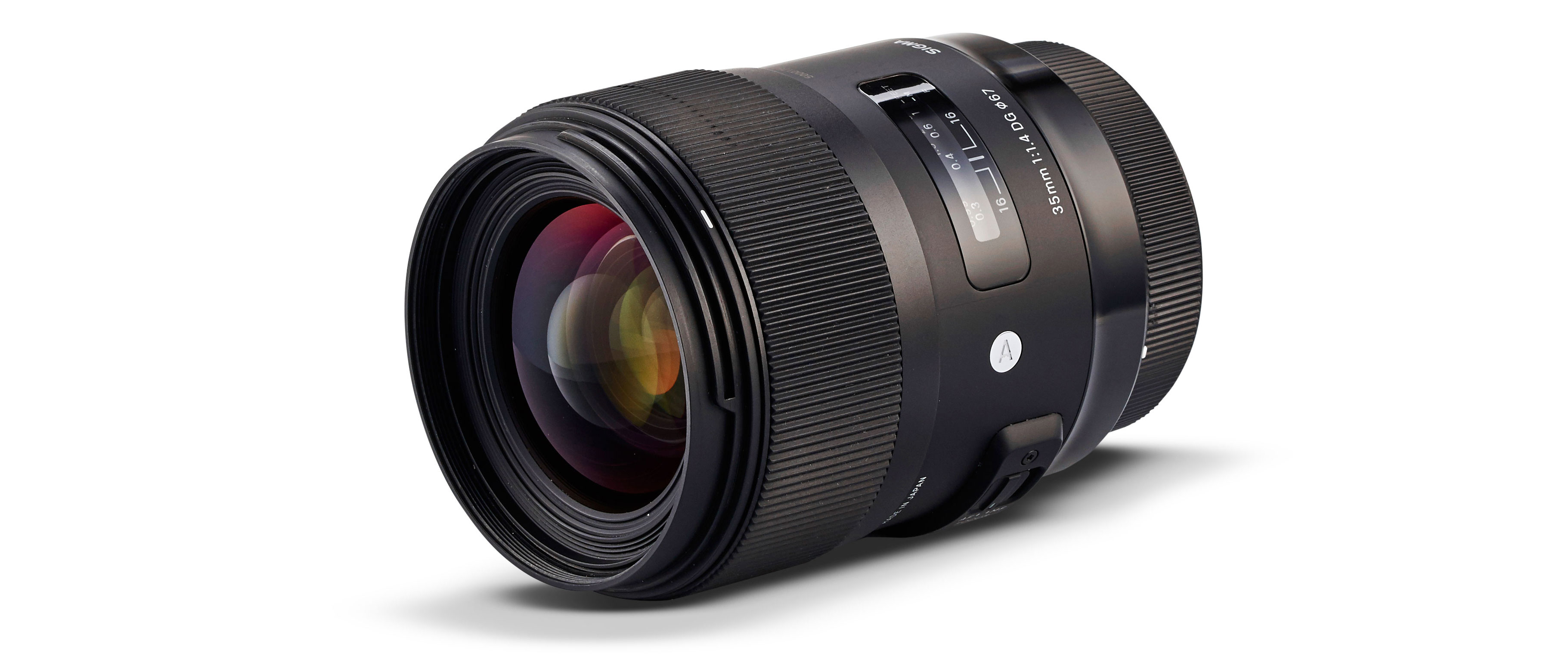Digital Camera World Verdict
Big on design, big on performance, small on price – the Sigma 35mm f/1.4 DG HSM | A arguably represents the best of all worlds. Sure it’s missing a few modern features like weather sealing, but the quality of images is frankly astonishing, and there are plenty of extra bonuses like a focus distance scale that make handling the lens enjoyable and intuitive. A fantastic achievement all around, this is a brilliant prime lens.
Pros
- +
Astounding image quality
- +
Terrific value for money
- +
Immaculate build quality
Cons
- -
No weather seals
Why you can trust Digital Camera World
Sigma’s 50mm and 85mm f/1.4 ‘Art’ lenses are notoriously big and heavy. By contrast, at 77x94mm and 665g, the Sigma 35mm f/1.4 DG HSM | A is more manageable in terms of handling, yet retains the same, fast f/1.4 aperture rating. It’s still lighter than Canon and Samyang’s 35mm f/1.4 lenses, but on the other hand, the Sigma is still a lot chunkier than Canon’s 35mm f/2 lens, and nearly twice the weight. It also lacks the Canon’s prized image stabilisation.
Build quality and finish are immaculate. Autofocus is fast and very quiet, while manual focusing is super-smooth and precise. There’s a generous amount of rotational travel and the focus ring itself is comfortably large. The focus distance scale is useful, with markings at the long end of the range for 0.6m, 1m and 2m before going on to infinity. However, there are only depth of field markings for an aperture of f/16. As with other Sigma ‘Global Vision’ lenses, it’s compatible with Sigma’s optional USB Dock for applying firmware updates and other aspects of fine-tuning.

Performance
It’s big in design, but the Sigma goes extra-large in terms of performance. Image quality is astounding. It matches or beats the Canon 35mm f/1.4 lens for sharpness across the whole frame, as you go through the aperture range. Colour fringing and distortion are also negligible. Quite a feat when you also consider that in various parts of the world the Sigma is between a third and half the price of the Canon.
The lens comes supplied with a petal-shaped hood for controlling reflections, as well as a padded soft case to protect it in transportation. Its filter thread is 67mm – small for a 35mm f/1.4 lens – and the lens doesn’t have any weather seals, nor a rubber ring around its mounting plate, so it’s worth being careful in inclement weather.
Read more:
The best Canon telephoto lenses in 2019
The best cameras under £500/$500 right now
The best camera deals, reviews, product advice, and unmissable photography news, direct to your inbox!
The 10 best enthusiast cameras
Jon spent years at IPC Media writing features, news, reviews and other photography content for publications such as Amateur Photographer and What Digital Camera in both print and digital form. With his additional experience for outlets like Photomonitor, this makes Jon one of our go-to specialists when it comes to all aspects of photography, from cameras and action cameras to lenses and memory cards, flash diffusers and triggers, batteries and memory cards, selfie sticks and gimbals, and much more besides.
An NCTJ-qualified journalist, he has also contributed to Shortlist, The Skinny, ThreeWeeks Edinburgh, The Guardian, Trusted Reviews, CreativeBLOQ, and probably quite a few others I’ve forgotten.


